Security deposit demand letter template
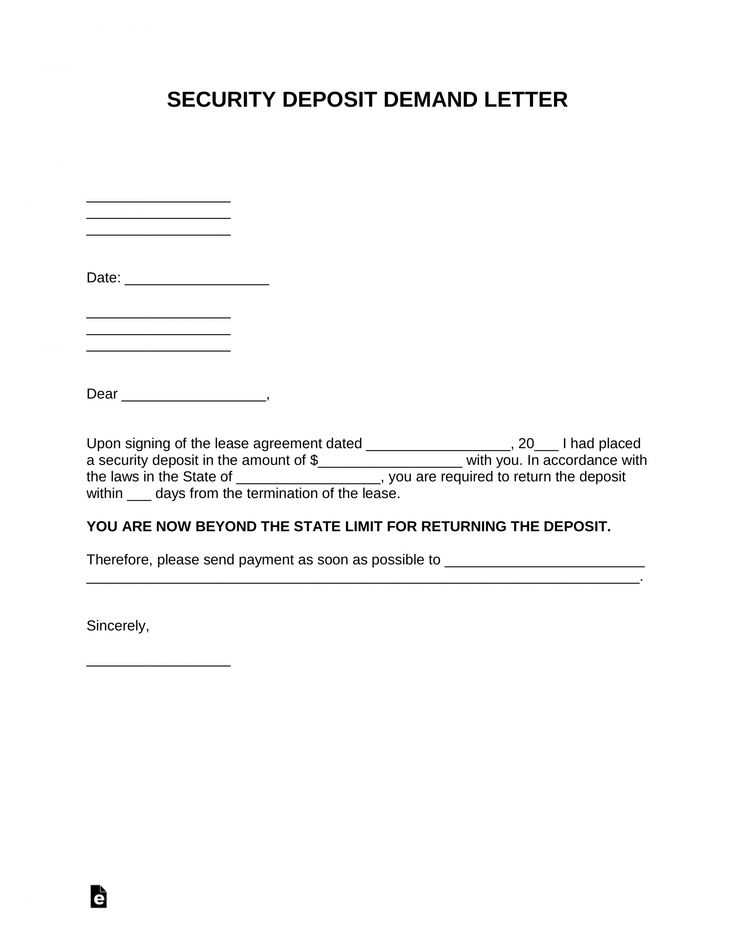
Begin with a clear and concise statement of your demand for the security deposit. Specify the amount due and reference any applicable terms from the rental agreement. Make sure to mention the timeframe within which you expect payment, such as 14 or 30 days, depending on the agreement.
Include a brief breakdown of any deductions from the deposit, if applicable. List these items clearly, referencing any damage or repairs that might have been necessary. Keep the tone professional, ensuring that the recipient understands why these deductions were made, if they exist.
State the consequences of non-payment in a firm but respectful manner. Mention any legal actions that might be taken if the demand is not met within the specified time frame. Reaffirm your willingness to discuss the matter, but be clear about your intent to pursue the deposit if it is not returned promptly.
Security Deposit Demand Letter Template
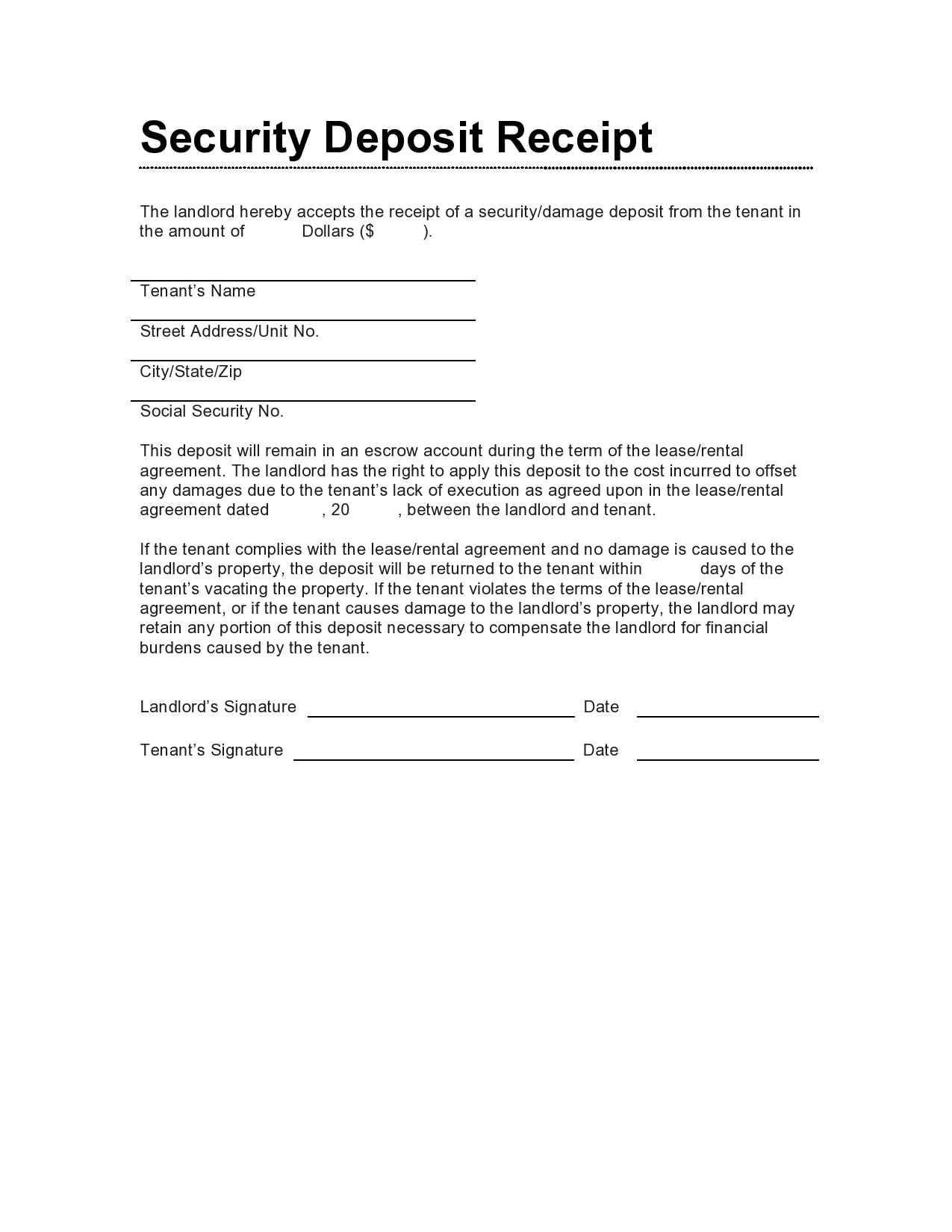
To initiate a security deposit claim, address the letter to the landlord or property management company. Begin by clearly stating your intent to request the return of your security deposit and outline the necessary details such as the rental address, move-in and move-out dates, and the amount of deposit paid.
Key Information to Include
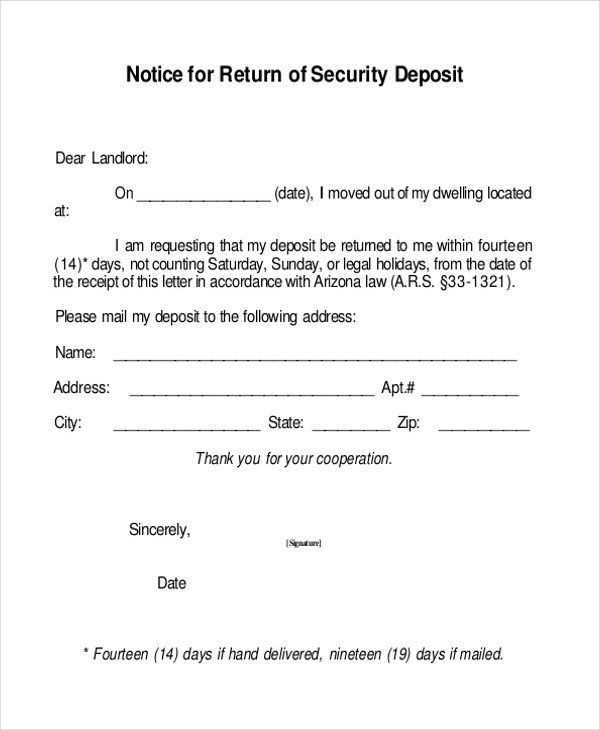
Start with a polite yet firm request for the return of your deposit. Mention any specific agreements or conditions from your lease that support your claim. List any damages or cleaning costs that should be deducted from the deposit if applicable. If no deductions are being made, explicitly state that the full amount is due.
Template Example
Dear [Landlord’s Name],
I am writing to request the return of my security deposit for the rental property located at [Property Address]. My lease ended on [Move-out Date], and I vacated the premises on [Move-out Date]. The total deposit paid was [Amount]. I believe there are no outstanding issues with the condition of the property, and the full deposit is due for return.
If any deductions are necessary, please provide an itemized list of charges. If the deposit is not returned within [specific number] days, I will be forced to take further action as permitted by law.
Thank you for your attention to this matter.
Sincerely,
[Your Name]
[Your Address]
[Your Phone Number]
How to Start Your Security Deposit Demand Letter
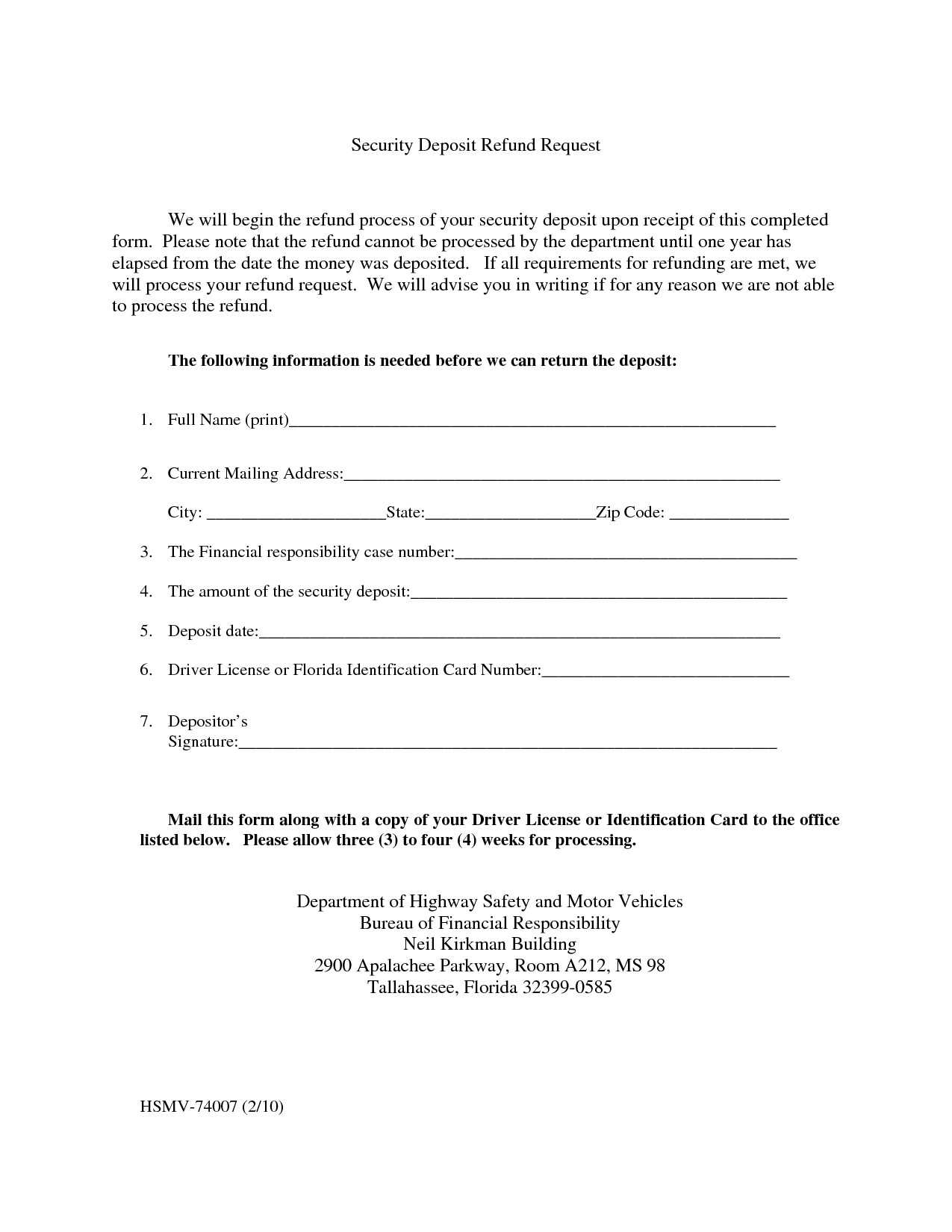
Begin by addressing the letter to your landlord or property manager. Make sure to use their full name and correct title. This avoids confusion and ensures your letter reaches the right person.
Next, clearly state the date of the letter at the top. This provides a reference point for any future communications and establishes a timeline.
State Your Request Clearly
In the opening sentence, directly state that you are requesting the return of your security deposit. Be specific about the amount, and refer to any applicable lease agreements. If there are deductions, mention them separately and explain why they were made. This helps avoid misunderstandings and keeps the process transparent.
Include Relevant Lease Details
Refer to the lease agreement to provide the necessary context. Include the lease start and end dates, as well as the address of the rental property. This connects your demand to the legal framework and ensures your request is grounded in the terms agreed upon.
Key Information to Include in Your Letter
Clearly state the reason for the demand. Include a reference to the lease agreement and the date of the property’s move-out inspection. Specify the amount of the security deposit you are requesting to be returned.
Details of Damages or Deductions
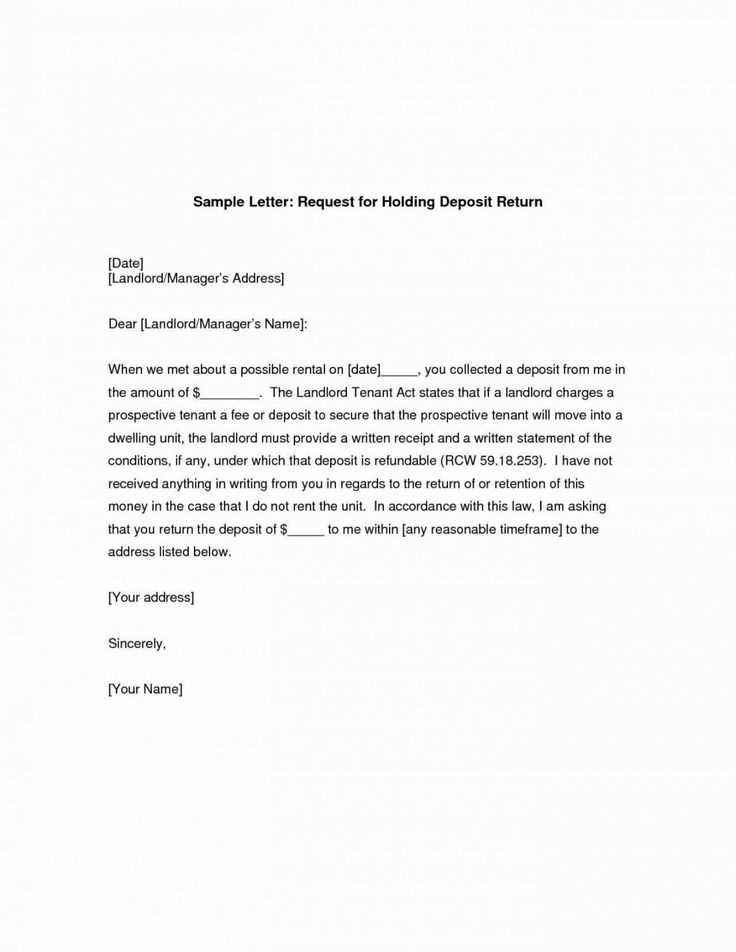
If there were any damages or issues that affected the deposit amount, list them. Provide a detailed breakdown of repair costs, if applicable. This helps avoid confusion and supports your request with tangible evidence.
Timeline and Deadlines
Set a clear deadline for the return of the security deposit. Typically, this is 30 days from the date of the letter or lease end date. If there are any reasons for a delay, mention them, but always suggest a reasonable resolution timeline.
How to Address the Landlord or Property Manager
Use a respectful and clear salutation in your letter. If you know the name of the landlord or property manager, address them directly using their full name. For example, “Dear Mr. Smith” or “Dear Ms. Johnson.” This personal approach shows that you’ve taken the time to find the correct contact details and that you are addressing them directly. If the name is not available, a simple “Dear Landlord” or “Dear Property Manager” is acceptable.
Use a Formal Tone
Maintain a professional tone throughout the letter. Even if the issue is personal or frustrating, sticking to formal language will help ensure that your request is taken seriously. Avoid using slang or overly casual expressions, as they can detract from the importance of your communication.
Avoid Ambiguity
Be specific when addressing the recipient. If the property is managed by a company or a property management team, include the company’s name in the salutation, such as “Dear XYZ Property Management.” If you are unsure whether your letter should go to the landlord or the property manager, direct your letter to both parties to cover all bases.
Setting a Deadline for Payment
Specify a clear date by which the payment must be made. This ensures both parties know the exact timeline for the transaction. Generally, a 7-14 day window is appropriate, but adjust this based on the urgency of the situation. Be direct and concise in your wording to avoid any confusion.
Examples of Effective Deadlines
- Payment must be received within 7 days from the date of this letter.
- The full amount is due by [specific date], with no extensions granted.
- We require payment no later than [date], after which further action may be considered.
Considerations for Setting Deadlines
- Ensure the deadline gives enough time for the recipient to process and arrange payment.
- Consider weekends and holidays; if the due date falls on one, extend the deadline to the next business day.
- Clearly state the consequences of missing the deadline to emphasize the importance of timely payment.
What to Do if the Security Deposit is Not Returned
If your security deposit hasn’t been returned within the required timeframe, take these steps:
First, review the lease agreement. Ensure the landlord has no grounds for withholding the deposit, such as unpaid rent or property damage. Compare the details of the agreement with your current situation.
Next, send a formal demand letter. This letter should state the specific amount due and request the return of the deposit. Keep the tone professional and factual, and set a deadline for the return of the deposit, typically 10 to 14 days.
If the landlord doesn’t respond or refuses to return the deposit, consider filing a complaint with your local consumer protection agency. They can often help resolve disputes without involving legal action.
If these steps don’t work, you may need to take legal action. Small claims court is often the easiest and most affordable route. Ensure you have all necessary documentation, such as the lease agreement, communication with the landlord, and any relevant receipts or photos showing the property’s condition at move-out.
Keep records of all communication, including emails, letters, or phone calls. This will serve as evidence should you need to escalate the issue.
| Action | Details |
|---|---|
| Review Lease Agreement | Check for clauses related to deposit returns and conditions for deductions. |
| Send Demand Letter | Clearly state the amount due and request the return of the deposit, with a set deadline. |
| File Complaint | Contact consumer protection agencies for assistance with dispute resolution. |
| Consider Legal Action | File a claim in small claims court if all else fails. Gather necessary documents. |
Legal Considerations and Local Laws
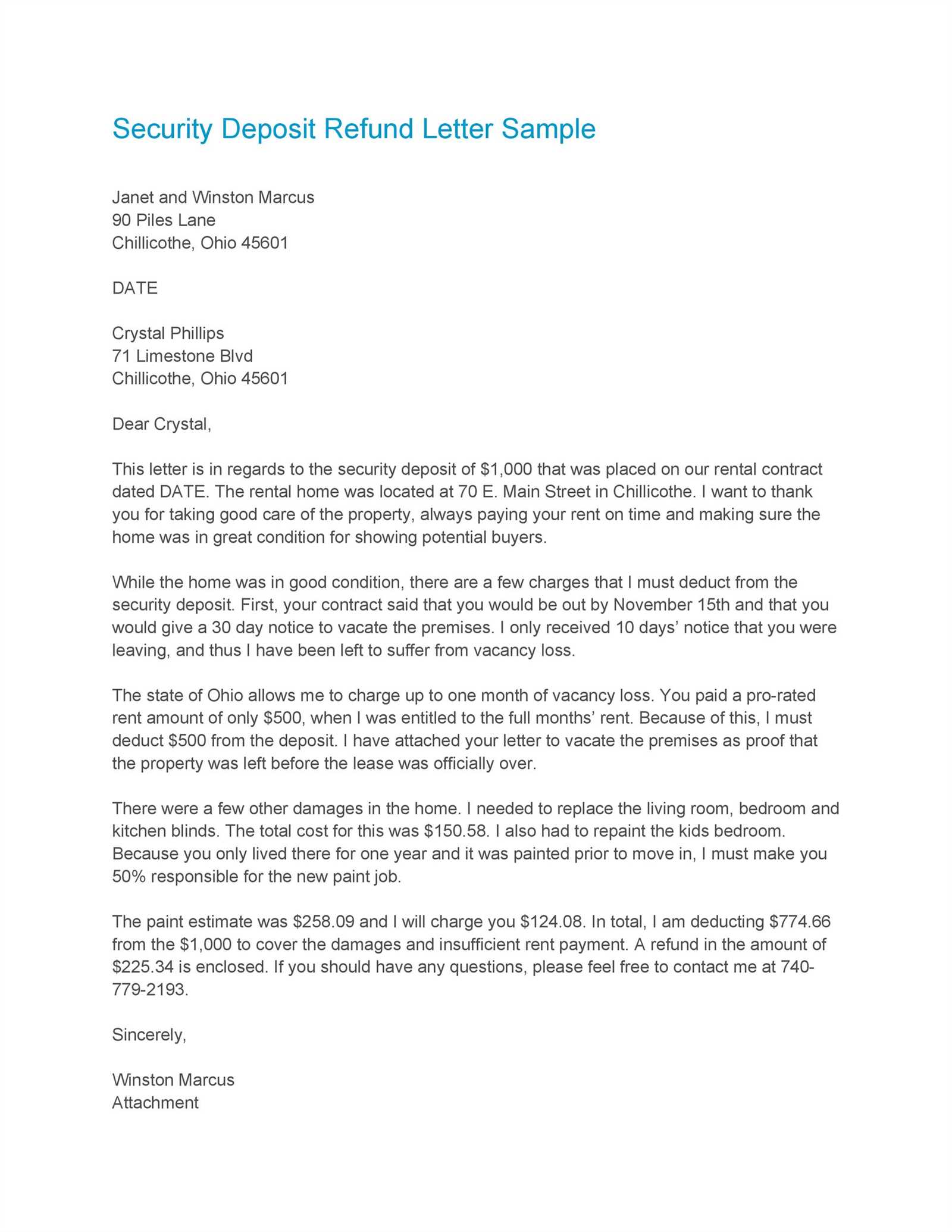
Check local laws before drafting a security deposit demand letter. Legal requirements can vary significantly across jurisdictions, and it’s critical to comply with the specific rules that apply in your area. The following points are essential to consider:
- Notice Period: Many states require landlords to return the security deposit within a set period, usually 30 days after the tenant vacates the property. Failure to comply may result in penalties.
- Itemized List of Deductions: Some areas mandate that landlords provide an itemized list of damages or cleaning costs deducted from the deposit. This transparency helps avoid disputes and clarifies the deductions made.
- Deposit Limits: Local laws may limit the amount a landlord can request as a security deposit. Typically, it’s one or two months’ rent, but check your area’s specific regulations.
- Tenant’s Rights: Tenants have the right to dispute any unfair charges. If a landlord withholds part or all of the deposit unjustly, tenants can seek legal action to recover the funds.
Ensure your demand letter reflects compliance with local laws, detailing the timeline for deposit return and any valid deductions. Research specific regulations for your jurisdiction to avoid legal complications.